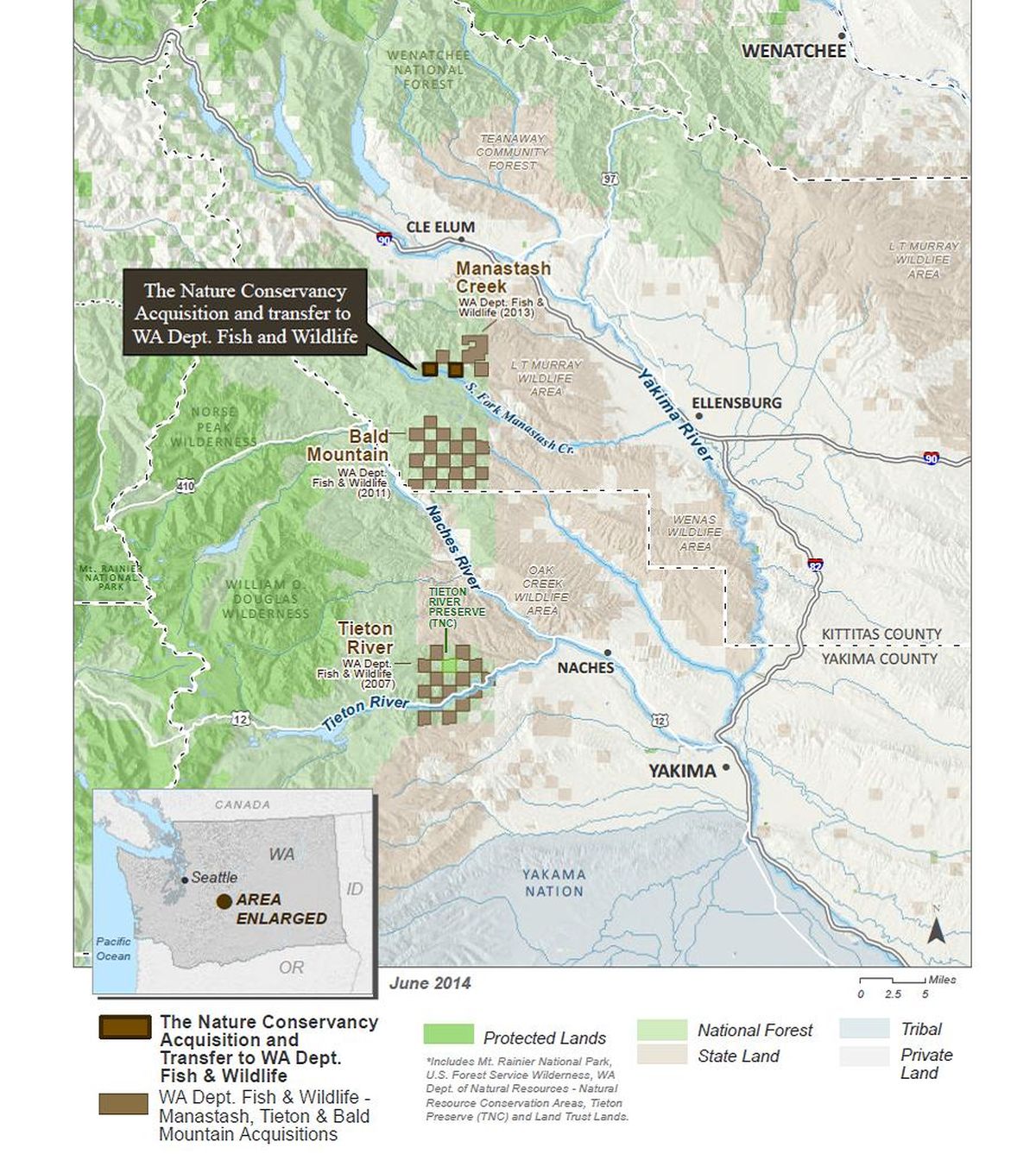Groups help state acquire Plum Creek lands in Cascades

PUBLIC LANDS — The Nature Conservancy has purchased 1,280 acres of timberland from Plum Creek in the Manastash area west of Ellensburg, and transferred it to the Washington Department of Fish and Wildlife to be managed as part of the L.T. Murray Wildlife Area.
This acquisition is the most recent in a decade-long project to eliminate a "checkerboard pattern" of public and private land and create large blocks of public lands in the Cascade Mountains.
Partnerships including the state agency, TNC, the Yakama Nation and Rocky Mountain Elk Foundation have brought more than 25,000 acres of private timberlands into public ownership as part of the Tapash Sustainable Forest Collaborative.
The program assures public access to these lands as it heads off the possibility of the timber company selling the properties to private interests that could install locked gates.
"These particular sections are full of streams and tributaries that flow into the Yakima River," TNC says in a media release. "Conserving this forest will protect valuable river habitat for wildlife as well as ensure water downstream for people, fish, and the rich agriculture of the Yakima Valley.
Plum Creek has played an important role in keeping these forests intact while the Conservancy brought together financing to bring them into public ownership.
- “Protecting the streams and forests in this region supports the Yakima Basin Integrated Water Plan, assuring water for people, salmon, wildlife and farms into the future," said Mike Stevens, Washington state director for The Nature Conservancy.
- "Plum Creek recognizes the public benefits of this project and is pleased to participate in the partnership that achieved this important conservation outcome,” said Jerry Sorensen, senior director of land management for Plum Creek.
- “Together, we’re ensuring that the public will continue to have access to this land for fishing, hunting, hiking and camping,” said Mike Livingston, Southcentral Region director for WDFW. “This diverse habitat supports threatened and endangered species such as bull trout, steelhead, spotted owls and wolves, as well as big-game such as mule deer and elk.”
The Washington Department of Ecology provided funding for this project through its Office of Columbia River.
